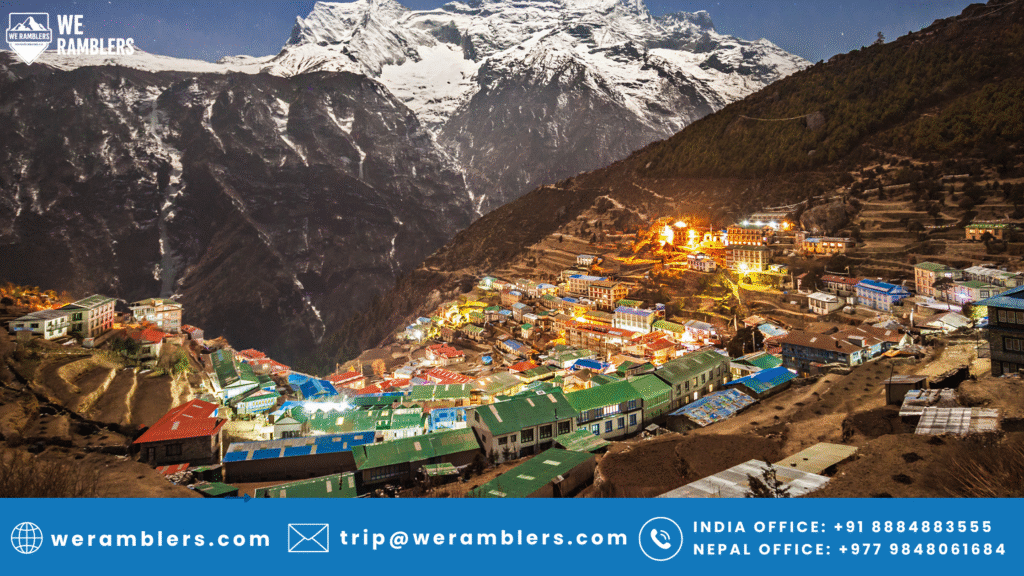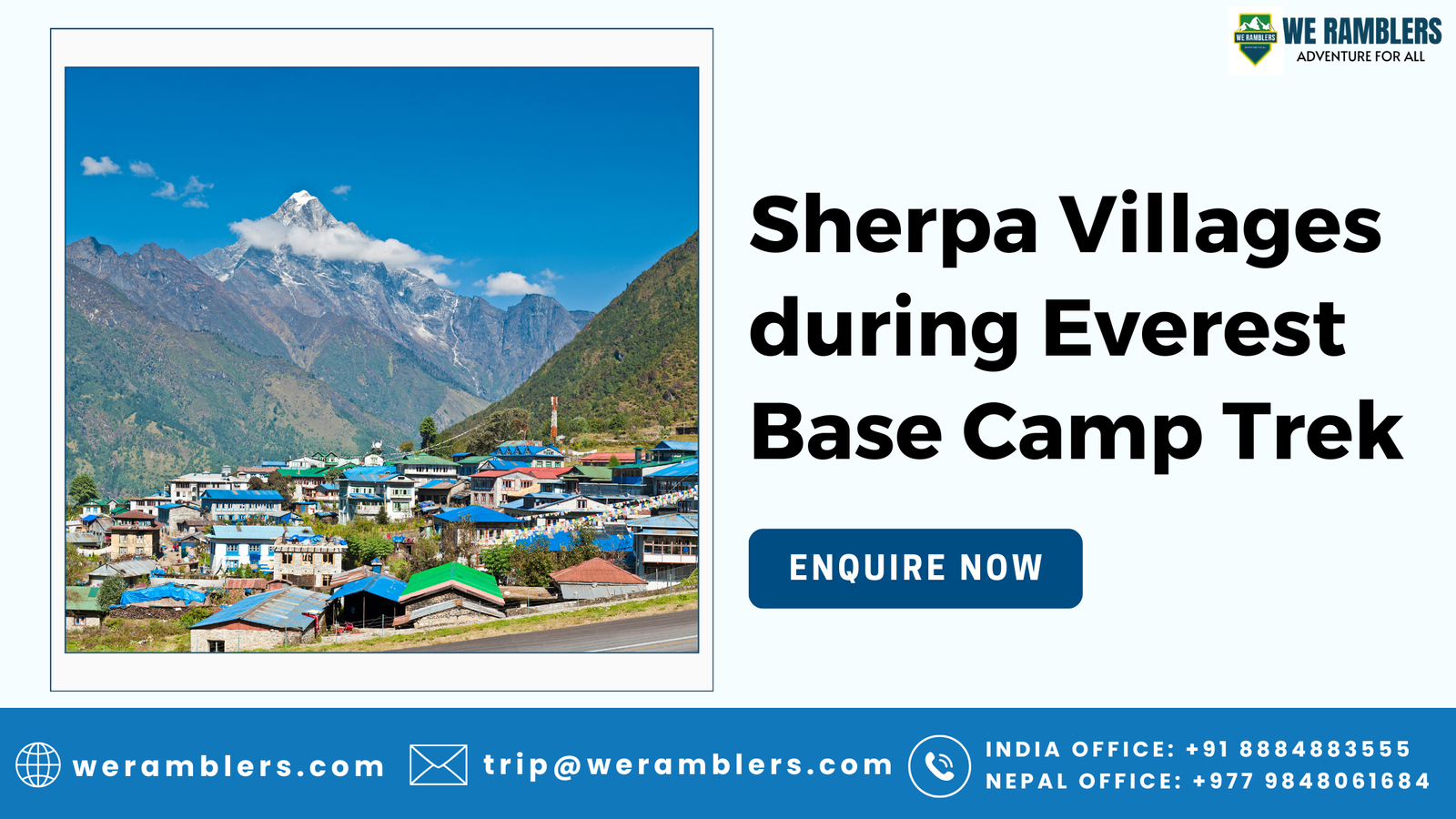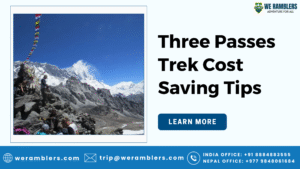Sherpa Villages during Everest Base Camp Trek – Culture, Stops & Travel Guide
Sherpa Villages during Everest Base Camp Trek are more than just stopovers on a Himalayan adventure; they are living, breathing centers of Sherpa culture, history, and hospitality. As you follow the legendary trail through the Khumbu region, these mountain settlements reveal centuries-old traditions, vibrant Buddhist heritage, and the warm spirit of the people who have long guided climbers to the world’s highest peak.
From the bustling trade hub of Namche Bazaar to the serene spiritual grounds of Tengboche Monastery, each village offers a unique experience that blends culture with breathtaking mountain scenery. And with trekking regulations in Nepal requiring that you must accompany a certified guide, visiting these villages becomes both a safe and deeply immersive cultural journey.
The Sherpa People & Their Role in Everest History
The Sherpas are an ethnic group native to the Himalayas of Nepal, known for their unmatched mountaineering skills and adaptation to high-altitude life. Their name is often associated with Everest expeditions, but their cultural heritage goes far beyond guiding climbers.
Historically, Sherpas migrated from Eastern Tibet over 500 years ago, settling in the Khumbu region. They practice Tibetan Buddhism, speak the Sherpa language, and celebrate colorful festivals like Mani Rimdu. Their resilience in extreme environments is due to generations of genetic adaptation, making them exceptional high-altitude porters and guides.
Many iconic Everest moments, including Tenzing Norgay’s 1953 ascent with Sir Edmund Hillary, were made possible by the courage and expertise of Sherpa climbers. Today, visiting Sherpa villages during Everest Base Camp Trek is both a cultural and historical experience.
Sherpa Villages You’ll Visit During Everest Base Camp Trek
Each Sherpa settlement along the Everest trekking route has its own character, landmarks, and hospitality style. Here’s a detailed look at the main villages on the trail.
1. Lukla – Gateway to the Everest Region
Your trek begins at Lukla, home to the famous Tenzing-Hillary Airport, often called the world’s most thrilling airstrip. At 2,860 meters, this village serves as the entry point to the Khumbu region.
Lukla is dotted with tea houses, gear shops, and bakeries catering to trekkers. The surrounding hills provide panoramic views of the Himalayas, and it’s the first taste of Sherpa hospitality before you hit the trail.
2. Phakding – First Stop on the Trail
Located at 2,610 meters, Phakding is a riverside settlement along the Dudh Koshi River. It’s a peaceful first-night stop, surrounded by pine forests and mountain ridges.
The village has cozy Everest trekking tea houses, prayer wheels, and suspension bridges adorned with colorful prayer flags. Many trekkers spend the afternoon exploring nearby Gompas (monasteries) or relaxing by the river.
3. Namche Bazaar – Sherpa Capital
At 3,440 meters, Namche Bazaar is the largest Sherpa settlement in the Khumbu region and a key acclimatization stop. Known as the gateway to Everest, it’s a lively marketplace where traders from Tibet and Nepal exchange goods.
Namche offers bakeries, cafes, gear shops, museums, and even internet cafes. Trekkers can visit the Sherpa Culture Museum and the Everest View Hotel for breathtaking panoramas of Ama Dablam, Lhotse, and Everest.

4. Khumjung & Khunde – Heart of Sherpa Culture
Nestled in a green valley under the shadow of Kongde Ri and Khumbila, the villages of Khumjung and Khunde are rich in Sherpa heritage.
Khumjung is home to the Edmund Hillary School, established in 1961, and the Khumjung Monastery, which houses a relic said to be a Yeti scalp. Nearby Khunde hosts the Khunde Hospital, another project initiated by Hillary.
5. Tengboche – Spiritual Center of the Khumbu
At 3,867 meters, Tengboche is the spiritual hub of the Everest region, best known for the Tengboche Monastery, the largest monastery in the Khumbu.
Trekkers often time their visit to witness monks chanting prayers against a backdrop of Everest, Ama Dablam, and Thamserku. The village is also a prime spot for photography, especially during sunrise.
6. Pangboche – Oldest Sherpa Village
Pangboche sits at 3,985 meters and is one of the oldest Sherpa settlements in the region. The Pangboche Monastery dates back over 350 years and is a significant religious site.
This village is often a resting point for trekkers heading to Ama Dablam Base Camp. It offers spectacular views of the peak and insight into ancient Buddhist traditions.
7. Dingboche – High-Altitude Sherpa Village
At 4,410 meters, Dingboche is known for its stone-walled fields and high-altitude potato farming. It’s an essential acclimatization stop for trekkers before heading towards Lobuche.
The village has several tea houses and is surrounded by majestic peaks like Ama Dablam and Lhotse. Trekkers often hike to Nagarjun Hill for acclimatization and panoramic views.
8. Lobuche – Gateway to Everest Base Camp
Lobuche, at 4,940 meters, is the last significant settlement before reaching Gorak Shep. It has basic accommodations, a memorial area honoring climbers who perished on Everest, and stunning views of Pumori and Nuptse.
It’s a short but challenging hike from Lobuche to the Khumbu Glacier, a key highlight of the trek.
9. Gorak Shep – Last Village Before EBC
At 5,164 meters, Gorak Shep is the final stop before reaching Everest Base Camp. Historically, it was used as a base camp for early Everest expeditions.
From here, trekkers make the final push to EBC or hike up Kala Patthar for the best close-up views of Mount Everest.
Importance of Visiting Sherpa Villages on the EBC Trek
Visiting Sherpa villages during Everest Base Camp Trek is more than just a cultural detour; it supports the local economy, preserves traditions, and enriches your trekking experience. By staying in local tea houses, hiring certified guides, and respecting local customs, trekkers contribute directly to the sustainable growth of the Khumbu region.
We Ramblers — Your Adventure Travel Partner in The Himalayas
We Ramblers is a trusted adventure travel company specializing in the Everest Base Camp Trek and other Himalayan expeditions. Our itineraries are designed to offer trekkers authentic experiences in all major Sherpa villages, ensuring cultural immersion alongside world-class safety standards.
We operate with certified trekking guides, prioritize eco-friendly practices, and work closely with local communities to promote sustainable tourism in the Himalayas.
Frequently Asked Questions (FAQs) About Sherpa Villages during Everest Base Camp Trek
Q1: How many Sherpa villages are there on the Everest Base Camp Trek route?
There are around 9–10 major Sherpa settlements including Lukla, Namche Bazaar, Tengboche, Pangboche, Dingboche, Lobuche, and Gorak Shep.
Q2: Which is the largest Sherpa village in the Khumbu region?
Namche Bazaar is the largest and most developed Sherpa settlement in the Everest region.
Q3: What is the cultural significance of Tengboche Monastery?
The Tengboche Monastery is the spiritual heart of the Khumbu, hosting annual Buddhist festivals and offering blessings to mountaineers.
Q4: How do Sherpa people adapt to high altitude?
Sherpas have developed unique genetic traits that allow efficient oxygen use, making them exceptionally suited for high-altitude living and climbing.
Q5: Why is it important to hire a certified guide for trekking in Nepal?
Hiring a certified guide ensures safety, navigation expertise, cultural interpretation, and compliance with Nepal’s trekking regulations. Contact us today to book your trekking package.





